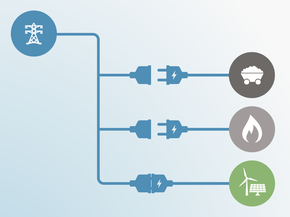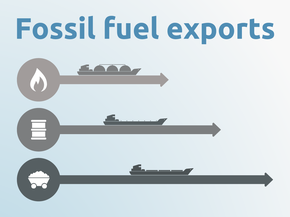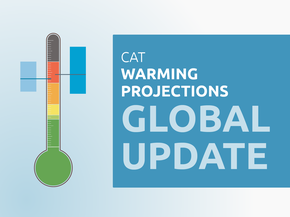Current Policy Projections
Economy-wide
With currently implemented policies, Costa Rica’s emissions levels could increase between 149% and 150% above 1990 levels by 2020 and between 175% to 187% of 1990 levels by 2030, excluding land use, land use change and forestry (LULUCF). Total emissions excl. LULUCF increased sharply in the early 1990s, and have steadily increased, though at a lower rate since 2000, doubling between 1990 (6.5 MtCO2e) and 2012 (13.8 MtCO2e). The LULUCF sector is expected to become a larger sink in the future, but emissions from transport, industry, and waste are expected to grow over time under current policies.
Costa Rica has put in place several policies to reduce GHG emissions. Most of the planned abatement will come from the LULUCF sector; the government intends to make an extensive use of funds from the REDD+ and carbon trade (Ministerio de Ambiente Energia y Telecommunicaciones, 2009; Ministerio de Ambiente y Energía, 2014). Until now, many of the accounting details for programmes like REDD+ in a post-2020 scenario have been uncertain (OECD, 2014).
Beyond LULUCF, the main policies driving mitigation take place in the energy, transport and agriculture sectors, with further substantial emissions reductions from the waste sector. Since the implementation of the National Climate Change Strategy (ENCC) in 2008, Costa Rica has been working to design mitigation actions in transportation, energy efficiency and conservation, renewable energy and agriculture (NAMA Database, 2011). Examples of the policies considered include a goal to have 100% electricity generated from renewable energy, better agricultural practices, waste management in cities and electric transportation (Ministerio de Ambiente y Energía, 2015b).
Costa Rica’s National Programme for Carbon Neutrality—first implemented in 2012—is a government initiative to reach carbon neutrality. A voluntary domestic carbon market has been established under the programme, in which businesses and organisations can purchase emissions offsets in pursuit of carbon neutrality, but only after they have done everything possible to reduce their own emissions. The programme also establishes a “C-Neutral” (carbon neutral) certification for businesses and a national registry of carbon footprints for organisations (Ministerio de Ambiente y Energía, 2015a).
At the end of 2017, the government launched a second phase: Carbon Neutrality Programme 2.0 (PNCC 2.0) (Ministerio de Ambiente Y Energía and Presidente de la República, 2017).With this update, the programme has expanded the certification categories and aims to attract more businesses and encourage other actors such as municipalities to participate (Gobierno de Costa Rica, 2017).
As a means of facilitating the implementation of the 2030 goal, in 2017 Costa Rica created a Scientific Council on Climate Change (or 4C) (Ministerio de Ambiente y Energía - Gobierno de Costa Rica, 2017b) and Citizen Consulting Council on Climate Change (or 5C) (Ministerio de Ambiente y Energía - Gobierno de Costa Rica, 2017a).
Energy supply
The energy sector contributed to 65% of total emissions in 2012 incl. LULUCF (Ministerio de Ambiente y Energía, 2015a). Under current policy projections the energy sector is expected to grow in average by 2% annually until 2030 according to Costa Rica’s First Biennial Update Report (Ministerio de Ambiente y Energía, 2015a).
The VII National Energy Plan 2015-2030, approved on September 14, 2015, supported the continuation of renewable energy development, energy efficiency and low-carbon emissions transport. The aspirational goal is to achieve and sustain 100% of electricity generation coming from renewable energy by 2021 (Ministerio de Ambiente y Energía, 2015c). In 2014, 90% of electricity was already generated from renewable sources, mainly hydropower (IEA, 2016) and Costa Rica already generates 100% RE electricity at certain times of the year. Further advances towards this goal are expected from the National Program for Carbon Neutrality that promotes hydro, geothermal, wind, solar and biomass as renewable energy sources.
Transport
According to the NDC, most of the emissions reductions in the transport sector will come from the increased use of electric transportation, both private and public (i.e. inter-urban train) (Ministerio de Ambiente y Energía, 2015b).
In early 2018, Costa Rica implemented the 9518 law on incentives and promotion of transport electrification (Asamblea Legislativa de la República de Costa Rica, 2018). This law addresses both public and private transportation. For private vehicles, it establishes financial and non-financial incentives to promote electric vehicles. The financial incentives include tax benefits—for value added, consumption, ownership, import and company taxes—of up to 5000 USD per vehicle (3 million CRC) (Artavia, 2017). The non-financial benefits include a labelling programme, exemption from traffic restrictions, preferential parking and promotion of charging stations for electric vehicles.
We have estimated that, depending on the electric vehicle penetration that will follow from this law, emissions could peak in 2029 (lower end of the range for current policy projection) or continue to increase but at a lower rate (higher end of range). We estimate that for 2030 a reduction between 0.4–1.1 MtCO2e, equivalent to 2–6% of GHG reductions compared to a pathway without this policy, can be achieved though incentives for private electric vehicles. We estimate this range based on two different penetration curves. If, on the one hand, electric vehicle market penetration follows a linear curve over time, emissions will continue to grow but at a lower pace as a result of law 9518 on the promotion of electric transportation. If, on the other hand, electric vehicle penetration follows a logistic curve—a pattern that has been observed for market penetration and diffusion technologies, including diesel cars (Rogers, 1971; Cames and Helmers, 2013; Roedenbeck and Strobel, 2014; ACEA, 2015)—Costa Rican emissions could peak in 2029 and start declining thereafter as a result of a higher replacement of conventional vehicles by electric cars.
Agriculture
For the agriculture sector, the NDC includes measures to increase access to finance for the procurement of low-carbon technologies, particularly for small and medium size enterprises (Ministerio de Ambiente y Energía, 2015b). Costa Rica also has a National Low-Carbon Livestock Strategy, which aims at replicating pilot projects such as the one in the Livestock NAMA.
Forestry
Historical emissions in the forestry sector show a decrease between 1990 and 2000—meaning that the sinks where increasingly higher that the emissions in this sector. Between 2000 and 2010 emissions flattened and in 2010 they started to increase. According to national inventory reports (Ministerio del Ambiente Energía y Telecomunicaciones and Instituto Meteorológico Nacional, 2009; Ministerio de Ambiente y Energía and Instituto Meteorológico Nacional, 2012, 2014), emissions have increased due to increased land use change between 2000 and 2012. Forests have been increasingly converted to other land uses—for agriculture and to grasslands. Sinks from forests—derived from biomass change and abandoned lands—have also increased between 2000 and 2012 but have since 2010 not outweighed the emissions—reversing the overall trend.
In the forestry sector, current efforts are mainly the Low Emissions Development Strategies and a REDD+ (Reduce Emissions from Deforestation and Forest Degradation) strategy at the national level.
National projections for the LULUCF sector from Costa Rica’s First Biennial Update Report show a decreasing emissions trend between 2010 and 2030 (Ministerio de Ambiente y Energía, 2015a). Net emissions are projected to be negative starting in 2017 in all three scenarios—conservative, optimistic and pessimistic—meaning that sinks (or removals) will be larger than emissions, and that these sinks are expected to grow overtime.
Costa Rica is counting on sinks in the LULUCF sector to achieve its carbon neutrality goal. It does this through the Costa Rican Compensation Units (UCC, in Spanish), which represent avoided, reduced, removed and stored emissions that have been monitored, reported and verified. These units are tradeable domestically on a voluntary basis (Salgado et al., 2013). The Carbon Neutrality 2.0 Program mentions these compensation units as a tool that could be used by organisations and municipalities to achieve carbon neutrality recognition (Ministerio de Ambiente Y Energía and Presidente de la República, 2017).
As included in NAMAs, the metrics to assess the potential for removals and emissions are under review and continuous improvement. Emissions excluding LULUCF could increase significantly from historical levels and require attention to further decarbonise the economy. We do not include the forestry sector in our rating—please see the CAT’s NDC ratings and LULUCF page for more details.
Waste
The waste sector contributed to 17% of total emissions in 2012, incl. LULUCF (Ministerio de Ambiente y Energía, 2015a). According to the same source, the waste sector is expected to grow between 18–38% between 2010 and 2030 under current policies.
The NDC plans to reduce GHG emissions by enhancing solid waste management in the Metropolitan area (Ministerio de Ambiente y Energía, 2015b).
Further analysis
Latest publications
Stay informed
Subscribe to our newsletter







